The Albanese government’s target to build 1.2 million homes over five years continues to flounder.
On Friday, the Housing Industry Association (HIA) released data on new home sales, which declined in November to the lowest level since January 2024.
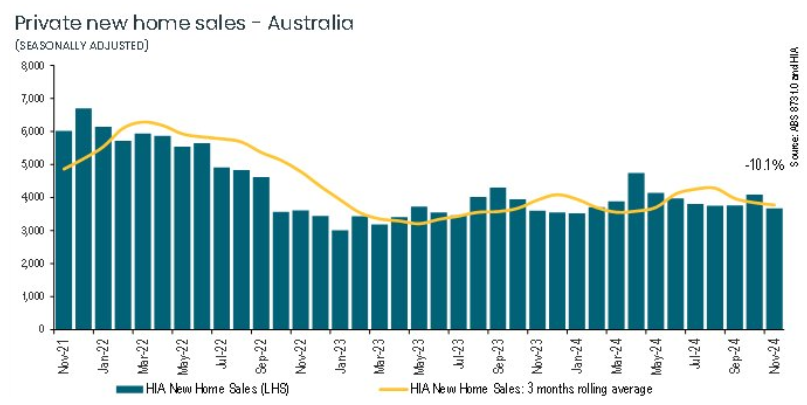
The following chart from Justin Fabo at Antipodean Macro shows that new home sales have retraced following the pull forward to beat changes to the National Construction Code.
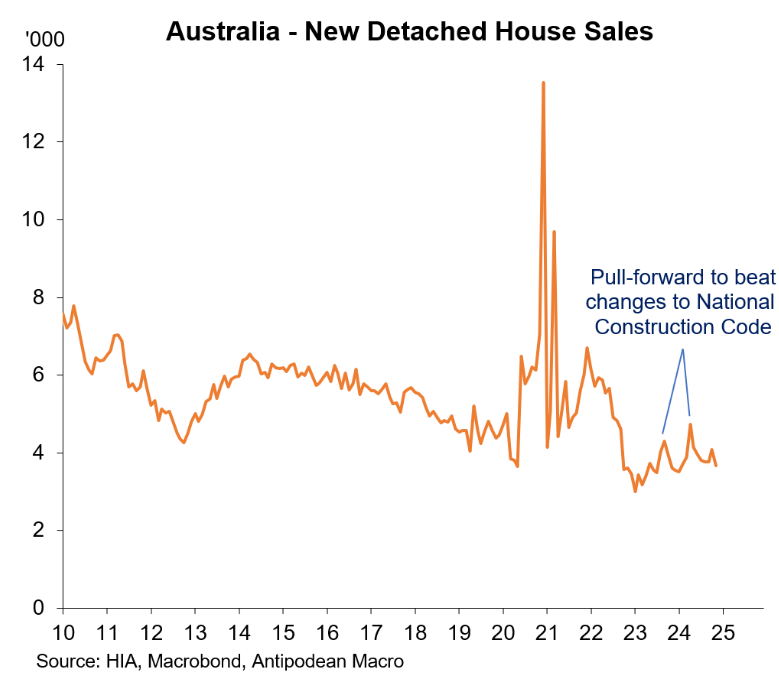
While new home sales in the 12 months to November were 8.2% higher than in the previous year, they remain at a historically low level overall.
The same can be said for Australian dwelling approvals, which rebounded moderately to 168,166 for the year ending October 2024. However, they were a hefty 78,834 (30%) below the Albanese government’s yearly target of building 240,000 homes.
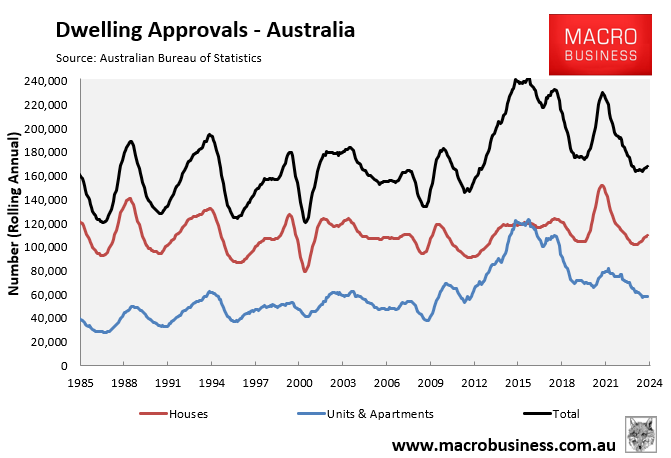
The homebuilding industry remains severely supply-constrained.
Construction costs have soared by around 40% since the beginning of the pandemic.

While cost inflation has eased significantly, output costs remain above pre-pandemic norms.
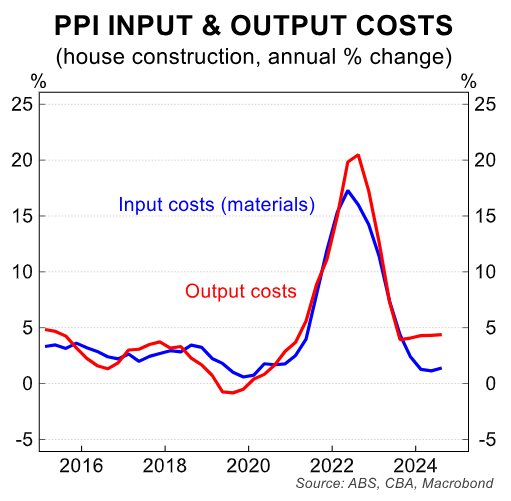
The vast numbers of insolvencies afflicting the sector have further eroded supply capacity.

Earlier this month, The AFR reported that insolvencies in the construction sector for the financial year to 17 November were 1431, an 18% increase from last year.
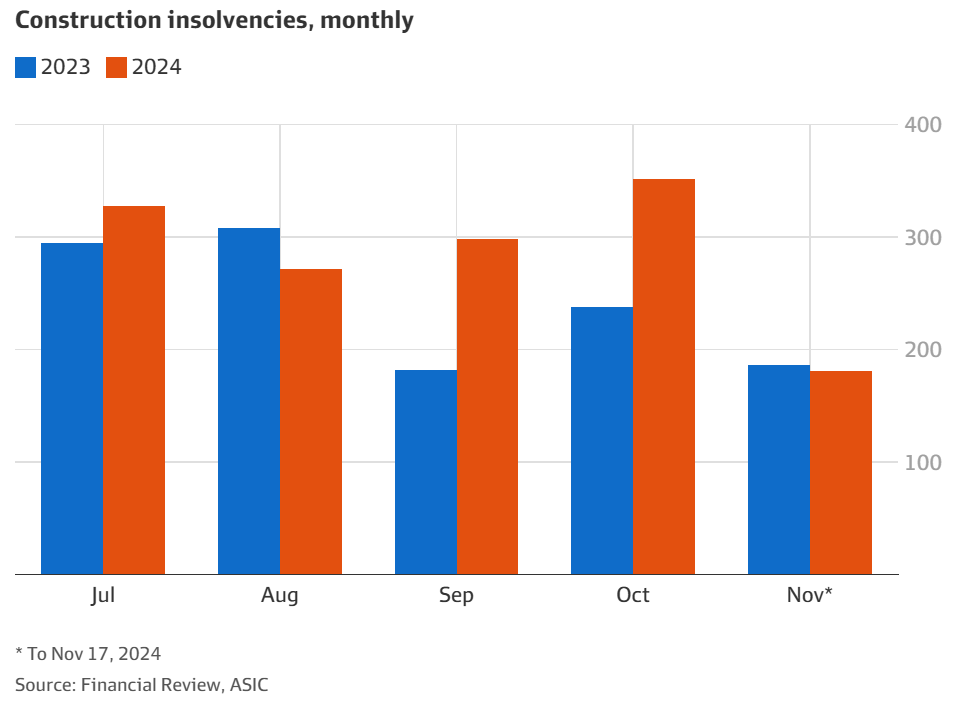
“High interest rates, inflation and labour shortages continue to impact businesses in our sector”, Master Builders Australia chief executive Denita Wawn said to The AFR.
“Even though some of the issues around building materials inflation are starting to abate, we’re still seeing the flow-on effect from the pandemic. Unfortunately, this continues to ripple throughout the industry”.
Separately, Warn told Radio 4BC that Australia would miss its 1.2 million housing target by more than 400,000 homes.
Although net overseas migration has fallen from last year’s record levels, it remains historically high.

Therefore, the federal government continues to import new housing demand faster than the nation can build housing and infrastructure—a recipe for disaster.
The problem is further exacerbated by the fact that very few of these imported migrants work in construction.

The solution to Australia’s housing shortage must involve slashing the volume of migrants entering Australia to alleviate the demand for housing and allow the building and construction sectors to catch up on existing projects.

